Looks almost like ruins of a base..... of course, it is just natural formations.
It's a forward SHADO outpost.
Looks almost like ruins of a base..... of course, it is just natural formations.
It has been the big Solar System mystery of 2015 - what are the bright spots on Ceres, the largest object in the asteroid belt between Mars and Jupiter?
Scientists think they now have some answers.
They are places where impacts have excavated a briny layer of water-ice under the dwarf planet's surface, the researchers tell the journal Nature.
And the very brightest features are the youngest, freshest exposures.
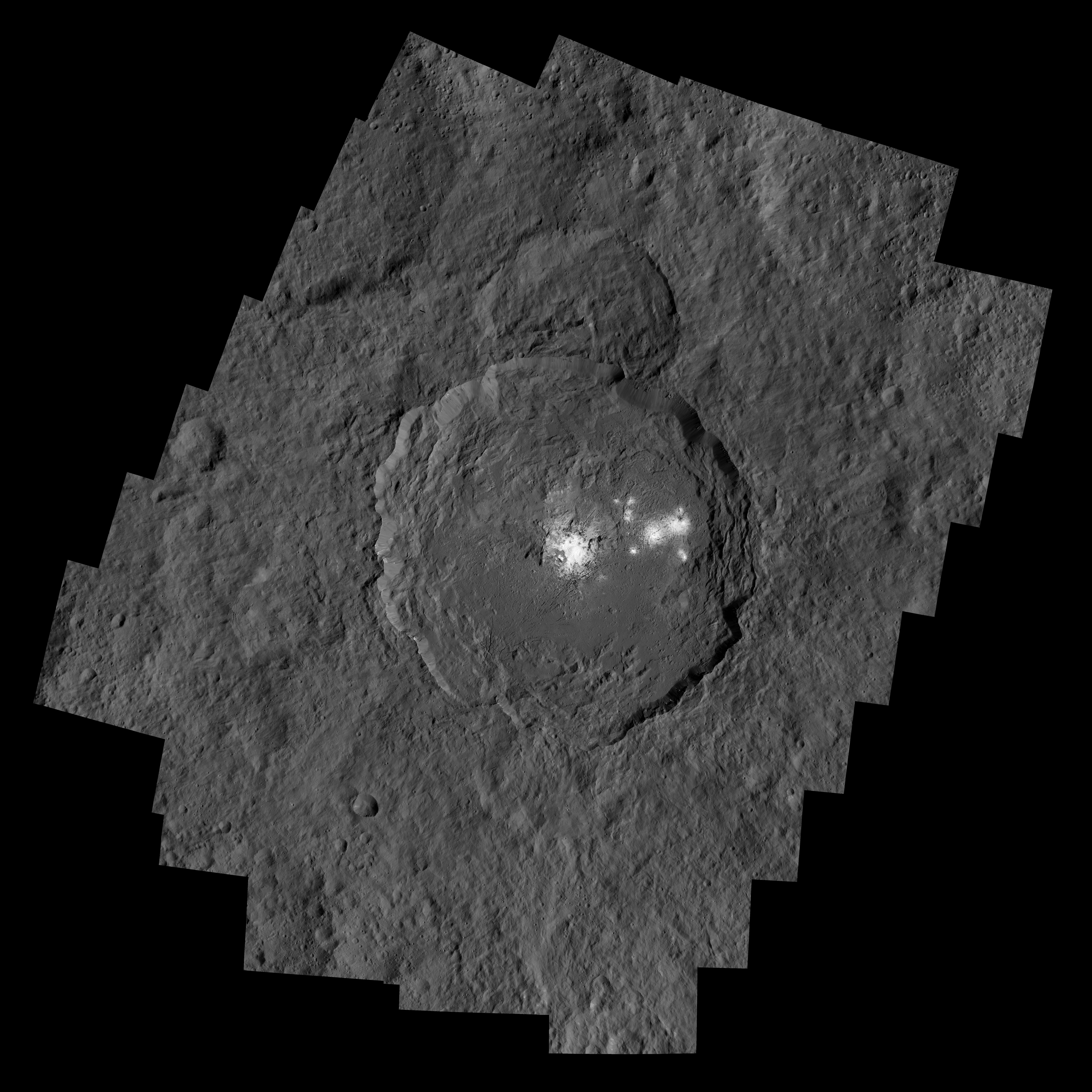
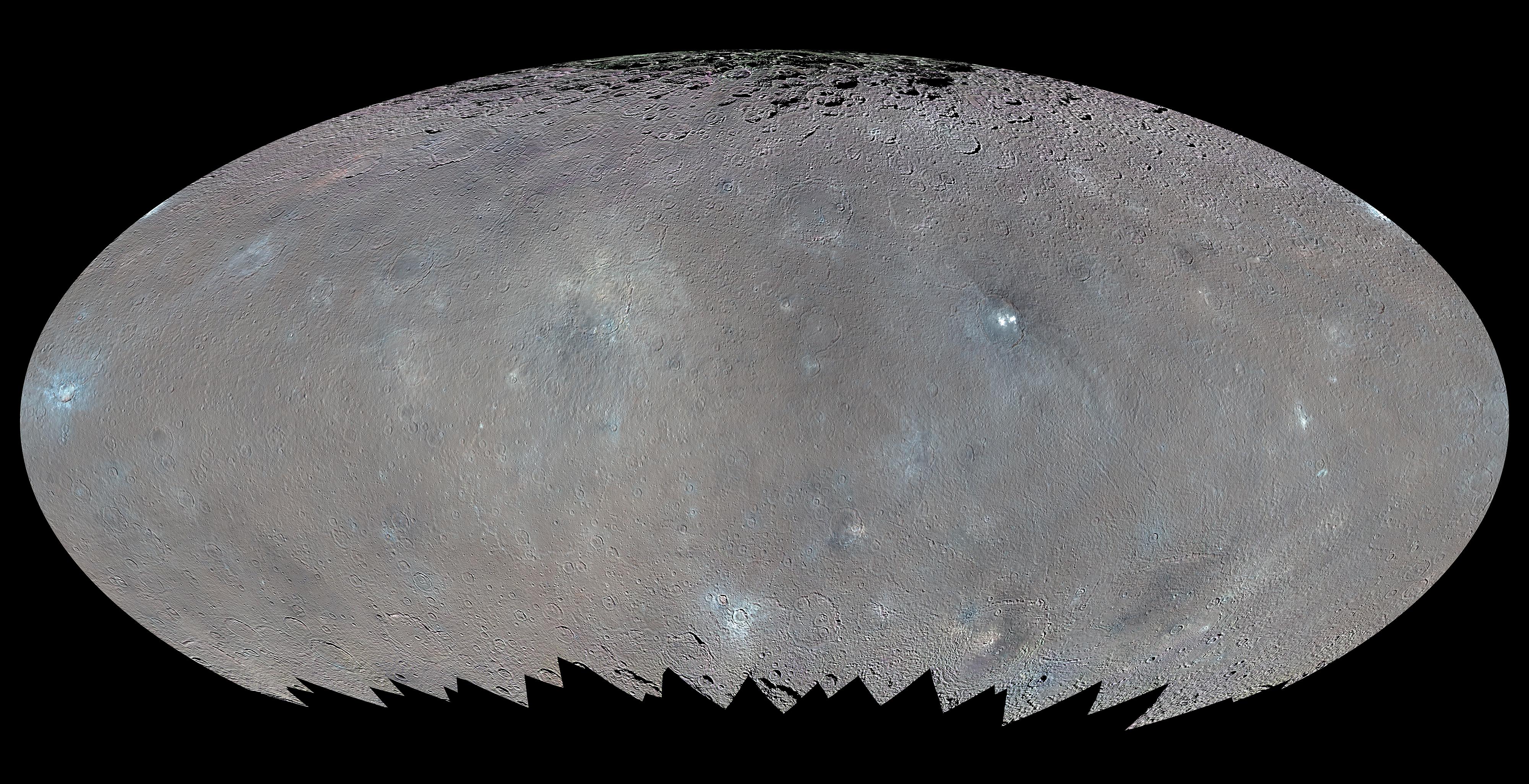
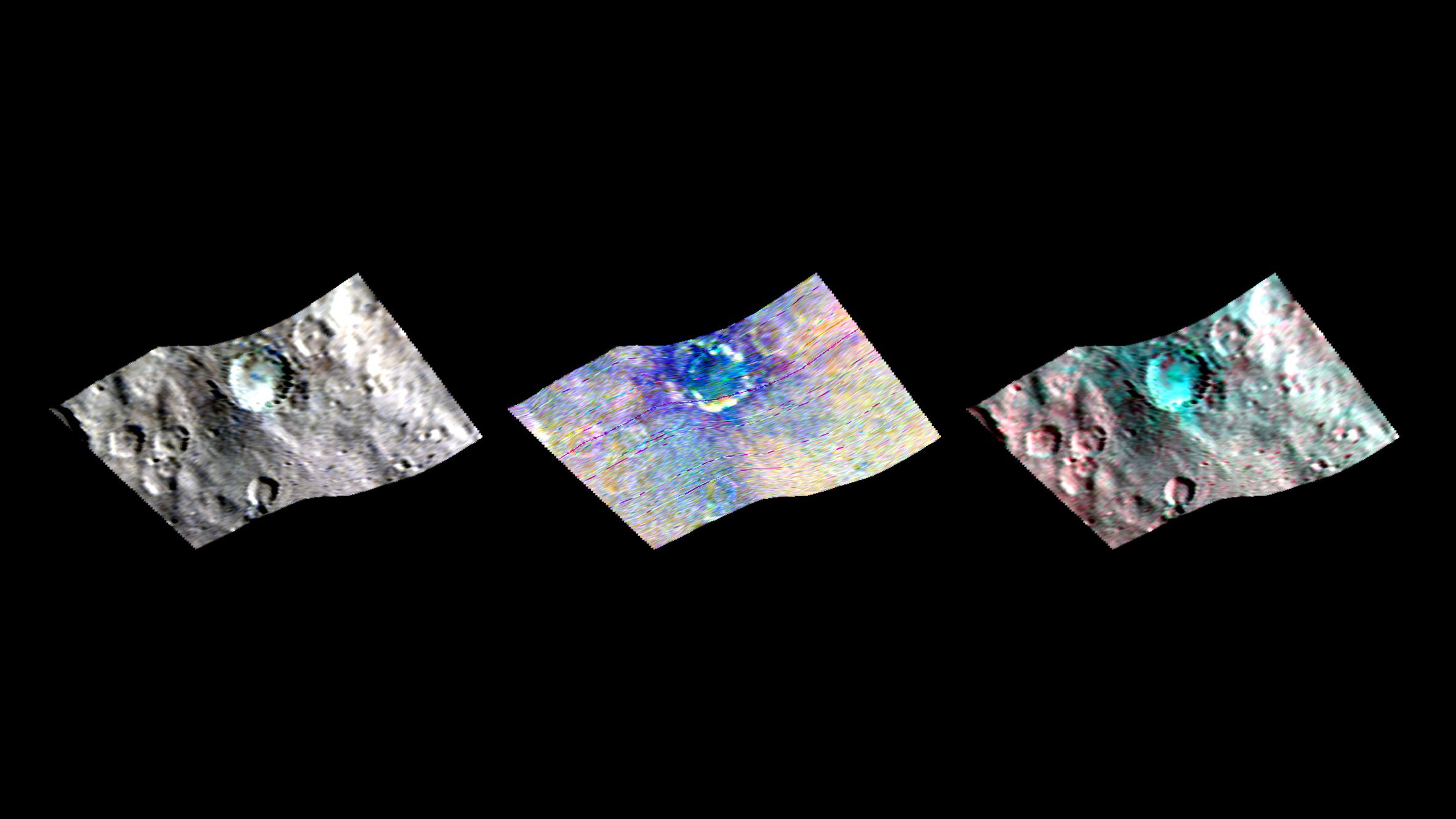
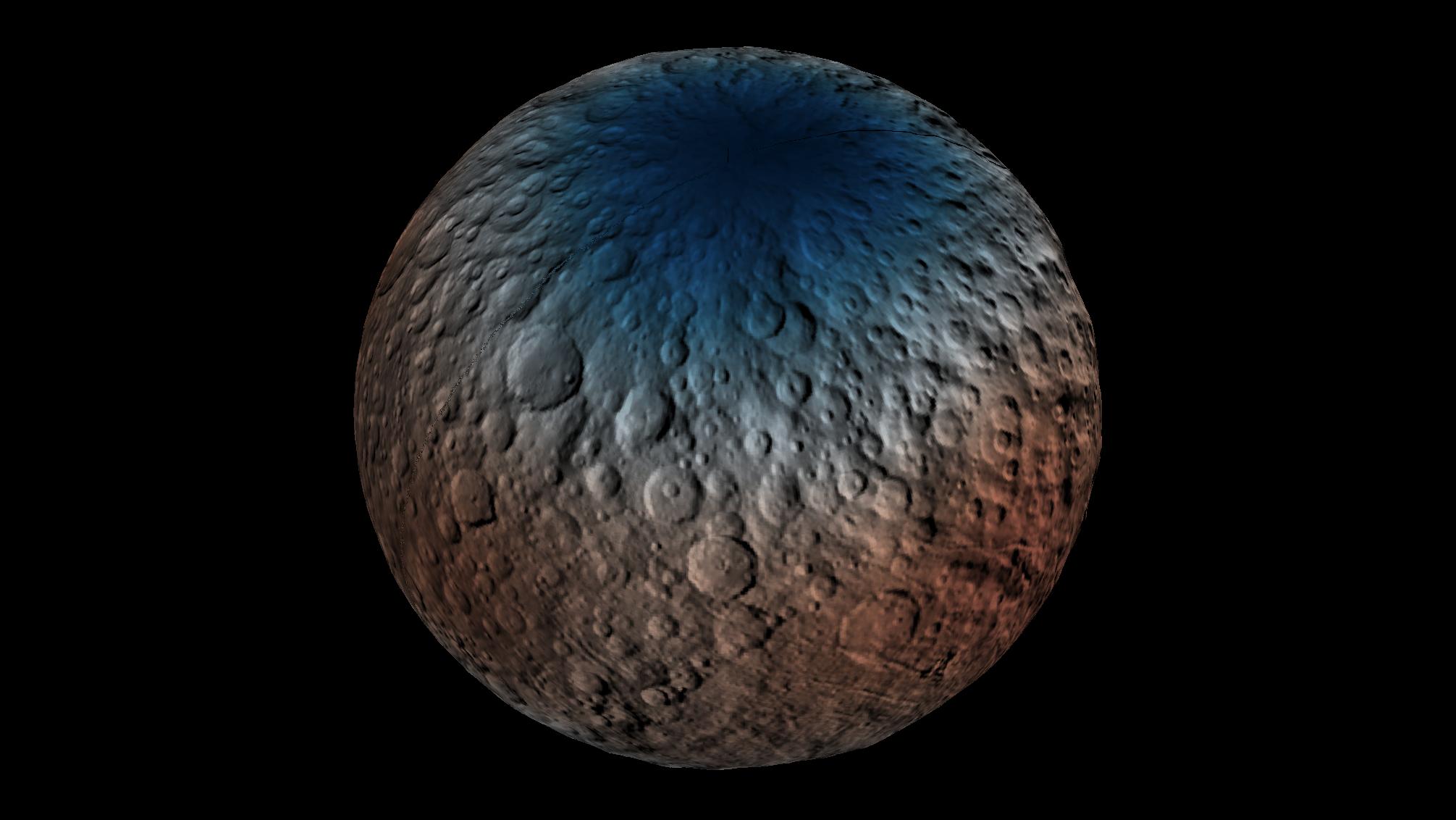
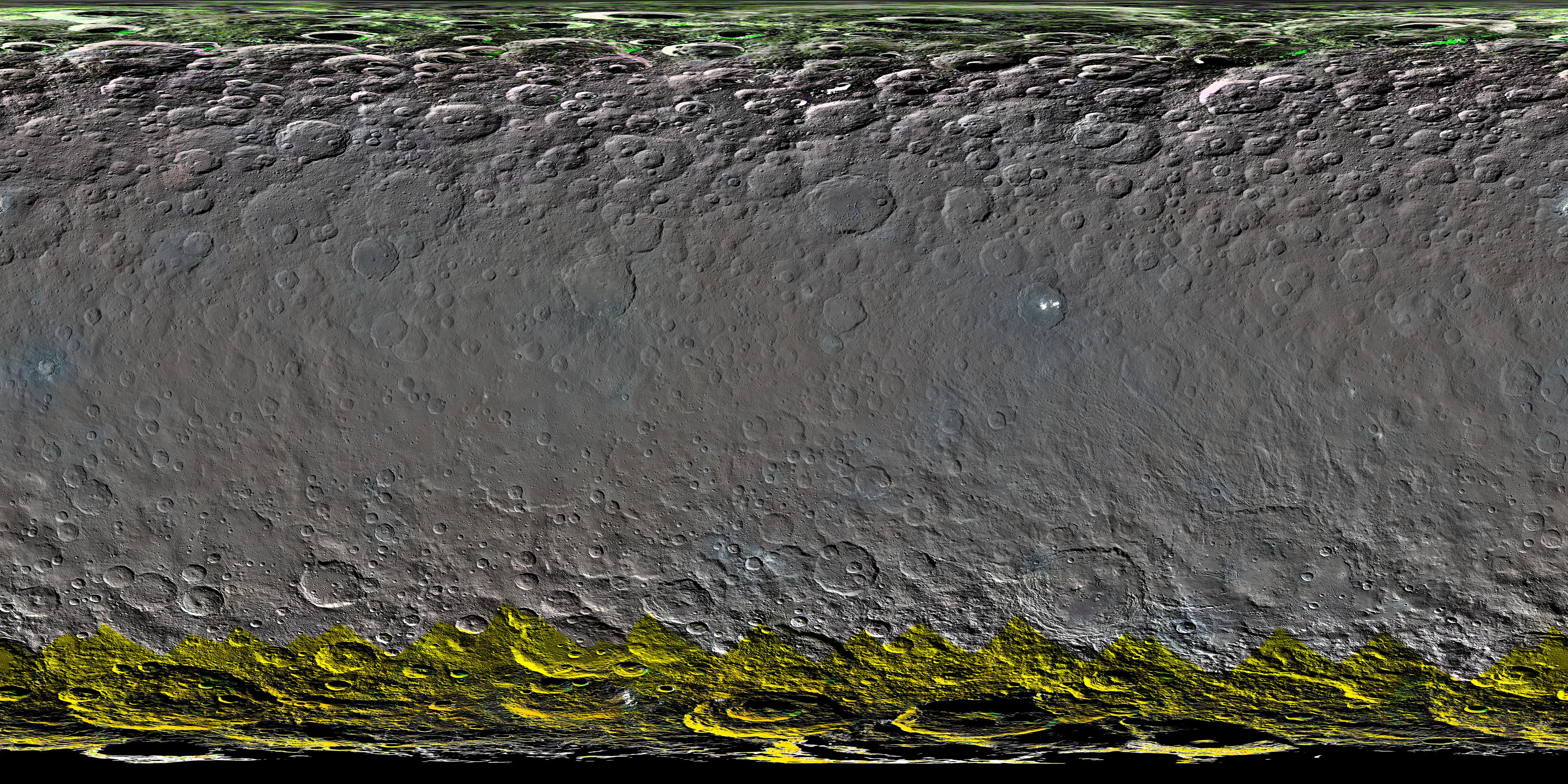
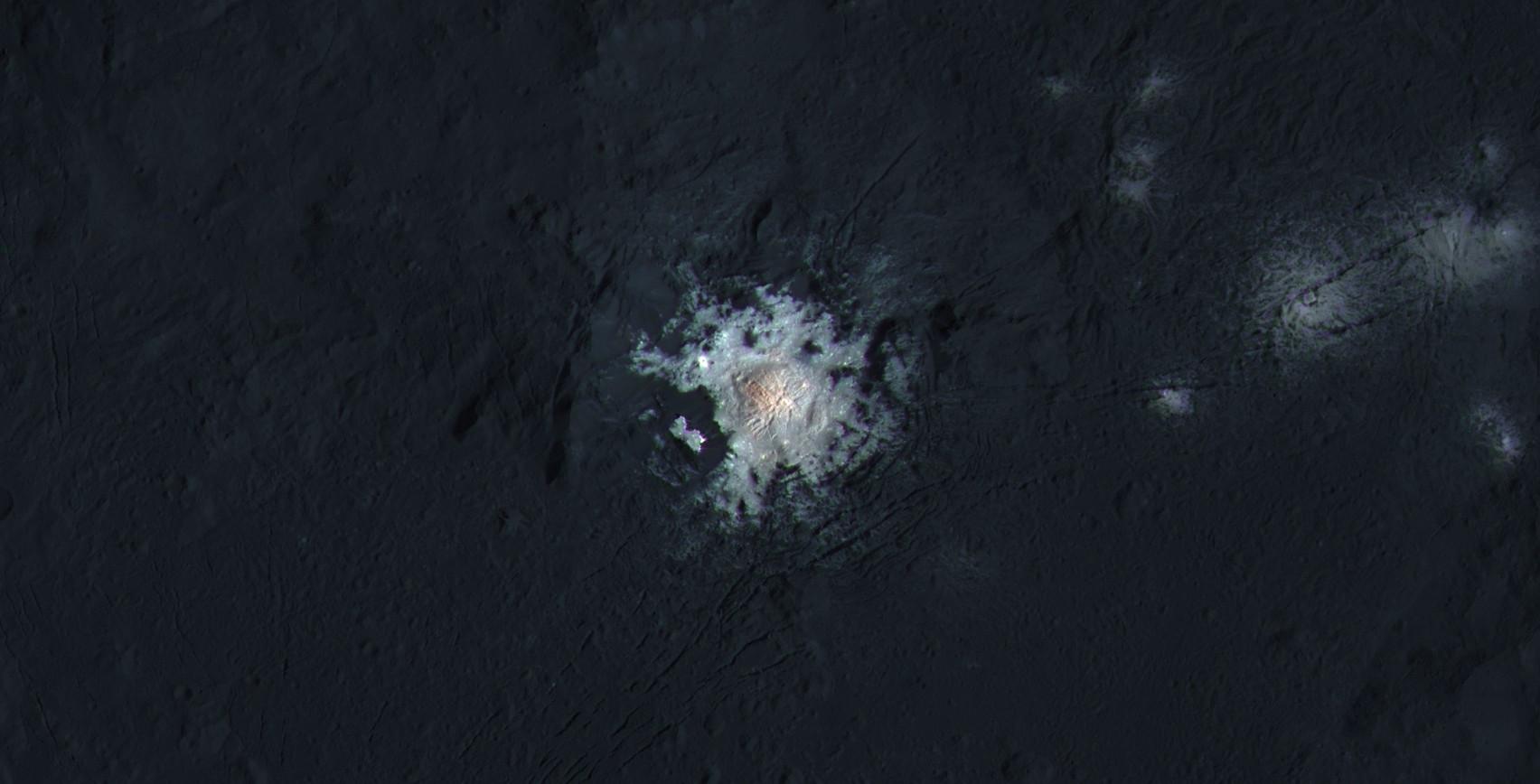
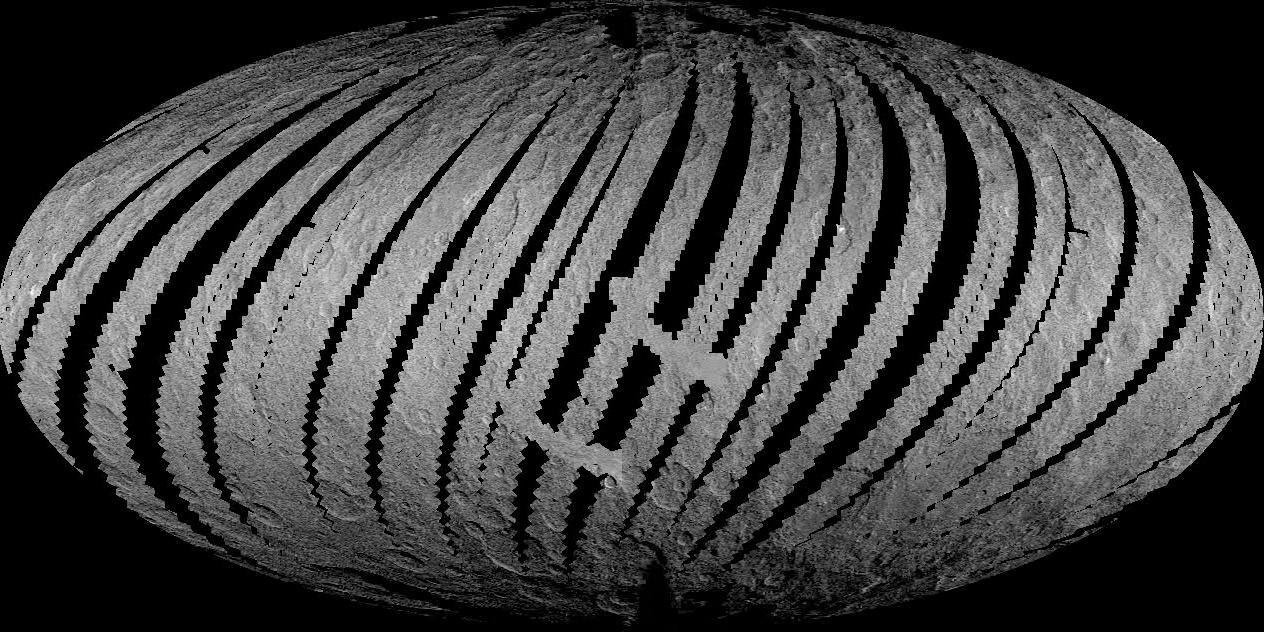
{...}
NASA determined that the Dawn spacecraft should remain at the dwarf planet Ceres, rather than changing course to the main belt asteroid Adeona.
Green noted that NASA relies on the scientific assessment by the Senior Review Panel in making its decision on which extended mission option to approve. “The long-term monitoring of Ceres, particularly as it gets closer to perihelion – the part of its orbit with the shortest distance to the sun -- has the potential to provide more significant science discoveries than a flyby of Adeona,” he said.
{...}

This enhanced color composite image, made with data from the framing camera aboard NASA's Dawn spacecraft, shows the area around Ernutet Crater. The bright red portions appear redder with respect to the rest of Ceres.
Credits: NASA/JPL-Caltech/UCLA/MPS/DLR/IDA

This enhanced color composite image from Dawn's visible and infrared mapping spectrometer shows the area around Ernutet Crater on Ceres. The instrument detected the evidence of organic materials in this area, as reported in a 2017 study in the journal Science. In this view, areas that appear pink with respect to the background appear to be rich in organics, and green areas are where organic material appears to be less abundant.Light with a wavelength of 2000 nanometers is shown in blue, 3400 nanometers is shown in green and 1700 nanometers is shown in red.
Credits: NASA/JPL-Caltech/UCLA/ASI/INAF
NASA has authorized a second extension of the Dawn mission at Ceres, the largest object in the asteroid belt between Mars and Jupiter. During this extension, the spacecraft will descend to lower altitudes than ever before at the dwarf planet, which it has been orbiting since March 2015. The spacecraft will continue at Ceres for the remainder of its science investigation and will remain in a stable orbit indefinitely after its hydrazine fuel runs out.
The Dawn flight team is studying ways to maneuver Dawn into a new elliptical orbit, which may take the spacecraft to less than 120 miles (200 kilometers) from the surface of Ceres at closest approach. Previously, Dawn's lowest altitude was 240 miles (385 kilometers).
A priority of the second Ceres mission extension is collecting data with Dawn's gamma ray and neutron spectrometer, which measures the number and energy of gamma rays and neutrons. This information is important for understanding the composition of Ceres' uppermost layer and how much ice it contains.

The spacecraft also will take visible-light images of Ceres' surface geology with its camera, as well as measurements of Ceres’ mineralogy with its visible and infrared mapping spectrometer.
The extended mission at Ceres additionally allows Dawn to be in orbit while the dwarf planet goes through perihelion, its closest approach to the Sun, which will occur in April 2018. At closer proximity to the Sun, more ice on Ceres' surface may turn to water vapor, which may in turn contribute to the weak transient atmosphere detected by the European Space Agency's Herschel Space Observatory before Dawn's arrival. Building on Dawn’s findings, the team has hypothesized that water vapor may be produced in part from energetic particles from the Sun interacting with ice in Ceres’ shallow surface. Scientists will combine data from ground-based observatories with Dawn's observations to further study these phenomena as Ceres approaches perihelion.
The Dawn team is currently refining its plans for this next and final chapter of the mission. Because of its commitment to protect Ceres from Earthly contamination, Dawn will not land or crash into Ceres. Instead, it will carry out as much science as it can in its final planned orbit, where it will stay even after it can no longer communicate with Earth. Mission planners estimate the spacecraft can continue operating until the second half of 2018.




{...}
The flight team maneuvered the spacecraft into an orbit that dives 22 miles (35 kilometers) above the surface of Ceres and viewed Occator Crater, site of the famous bright deposits, and other intriguing regions. In more than three years of orbiting Ceres, Dawn's lowest altitude before this month was 240 miles (385 kilometers), so the data from this current orbit bring the dwarf planet into much sharper focus.
These low orbits have revealed unprecedented details of the relationships between bright and dark materials in the region of Vinalia Faculae. Dawn's visible and infrared mapping spectrometer had previously found the bright deposits to be made of sodium carbonate, a material commonly found in evaporite deposits on Earth. Last week Dawn fired its ion engine, possibly for the final time, to fly nearer Cerealia Facula, the large deposit of sodium carbonate in the center of Occator Crater.
{...}
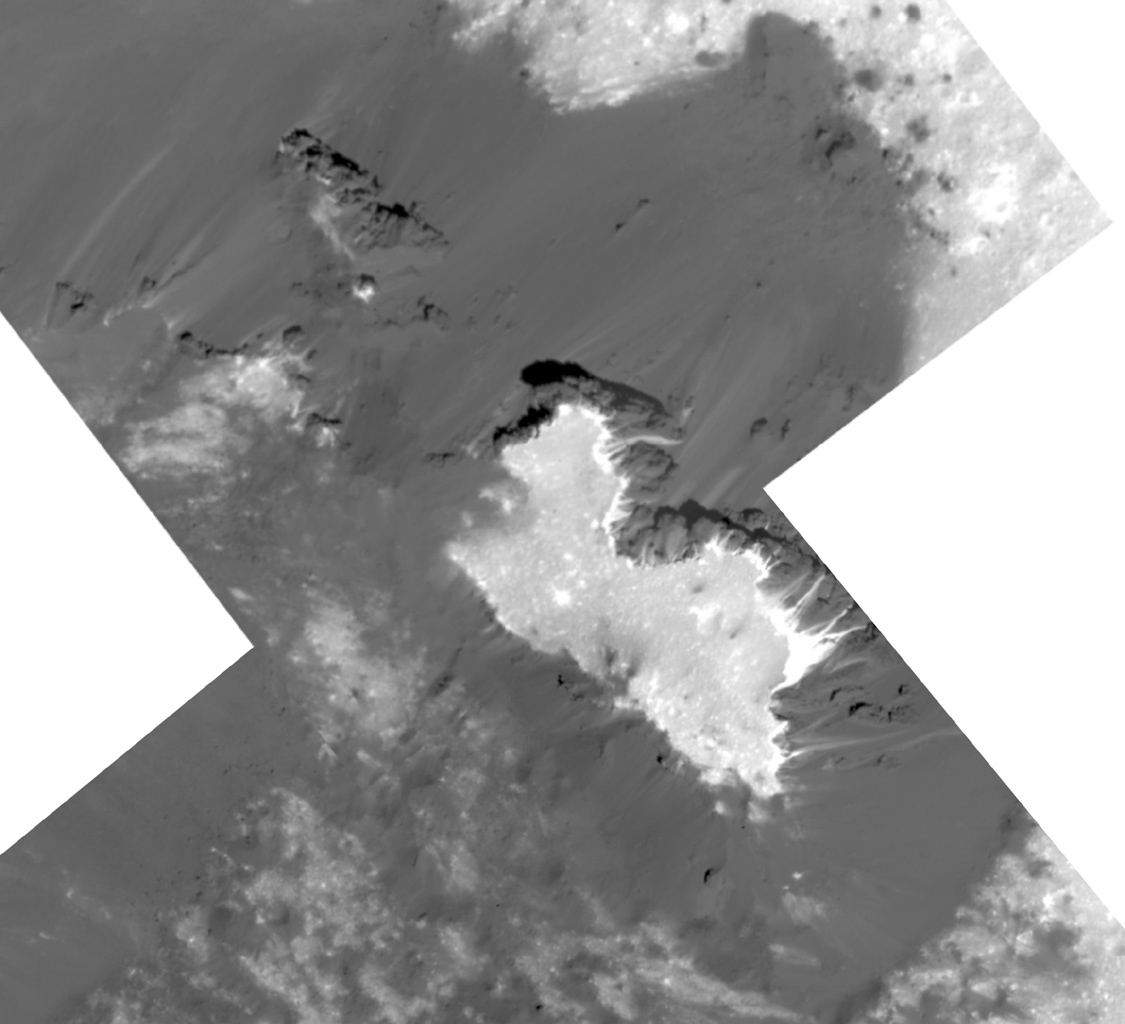
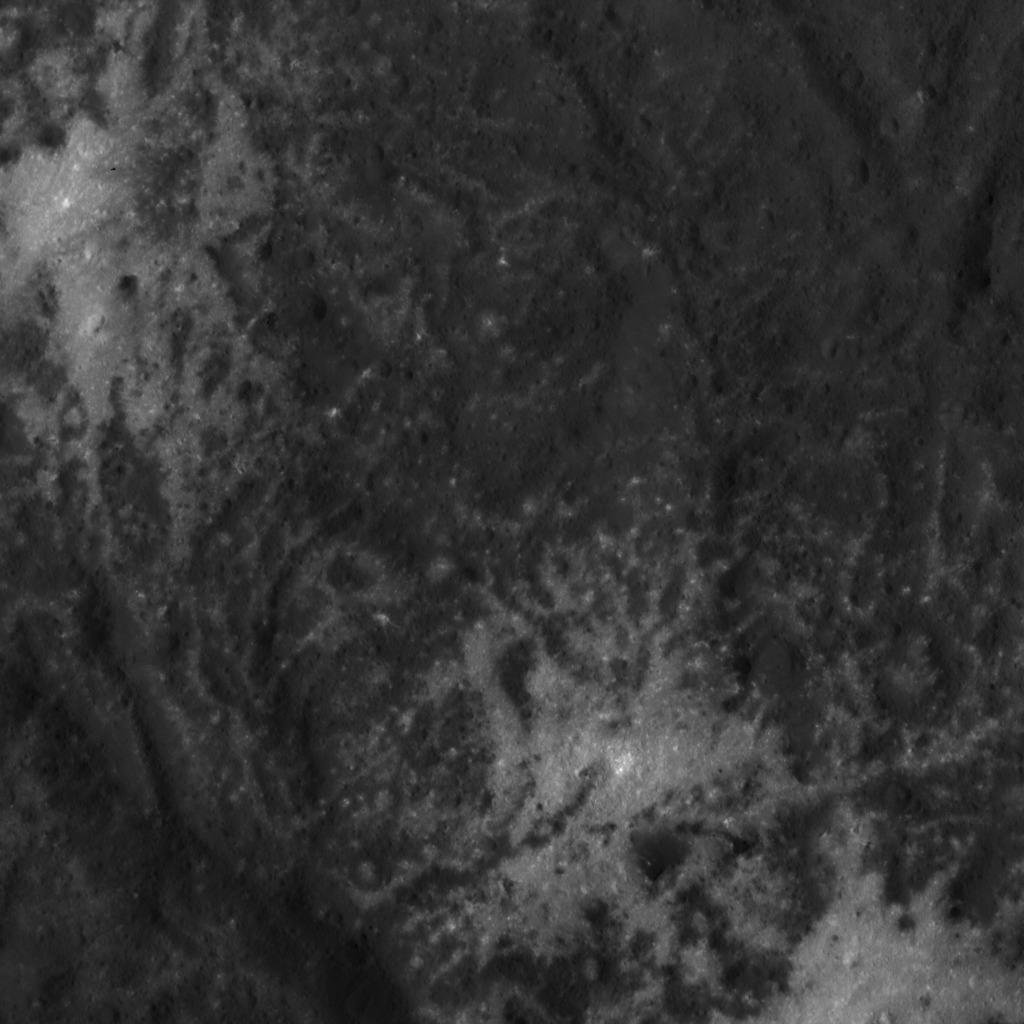


[...]
Although the Dawn mission is winding down, the science is not. Besides the high-resolution images, the spacecraft is collecting gamma ray and neutron spectra, infrared and visible spectra, and gravity data. The observations focus on the area around Occator and Urvara craters, with the main goal of understanding the evolution of Ceres, and testing for possible ongoing geology.
“The new images of Occator Crater and the surrounding areas have exceeded expectations, revealing beautiful, alien landscapes,” said Carol Raymond of JPL, principal investigator of the Dawn mission. “Ceres’ unique surface appears to be shaped by impacts into its volatile-rich crust, resulting in intriguing, complex geology, as we can see in the new high-resolution mosaics of Cerealia Facula and Vinalia Faculae.”
The first results of this mission phase, which started in early June, are being presented this week at the Committee on SPAce Research (COSPAR) meeting in Pasadena. Raymond and JPL scientist Jennifer Scully will offer new information on the relationships between bright and dark materials on the floor of Occator Crater, which show impact processes, landslides and cryovolcanism.
Dawn scientists are using new high-resolution data from Dawn to test and refine hypotheses about Occator crater’s formation and evolution. “Observations, modeling and laboratory studies helped us conclude that the bright spots are either formed by impacts interacting with the crust, or that a reservoir of briny melt contributed to their formation,” said Scully.
The new images so far support the hypothesis that exposure of subsurface material in that region is ongoing, and that it is geologically active, feeding from a deep reservoir. Eleonora Ammannito of the Italian Space Agency, deputy lead for the Dawn visible and infrared mapping spectrometer, will present updated maps at the conference showing the distribution of briny materials across Ceres’ surface.
Also at COSPAR, Dawn flight team member Dan Grebow of JPL will describe Dawn’s final orbit, designed to abide by NASA’s planetary protection protocols.
[...]
NASA’s Dawn mission is drawing to a close after 11 years of breaking new ground in planetary science, gathering breathtaking imagery, and performing unprecedented feats of spacecraft engineering.
Dawn’s mission was extended several times as it explored Ceres and Vesta, which when combined, make up 45 percent of the mass of the main asteroid belt. Now, the spacecraft is about to run out of a key fuel, hydrazine. When that happens, most likely between September and October, Dawn will lose its ability to communicate with Earth. It will remain in a silent orbit around Ceres for decades.
Nearing the End
Dawn has continued to gather high-resolution images, gamma ray and neutron spectra, infrared spectra and gravity data at Ceres. Nearly once a day, it will swoop over Ceres about 22 miles (35 kilometers) from its surface -- only about three times the altitude of a passenger jet -- gathering valuable data until it expends the last of the hydrazine that feeds thrusters controlling its orientation.
Because Ceres has conditions of interest to scientists who study chemistry that leads to the development of life, NASA follows strict planetary protection protocols for the disposal of the Dawn spacecraft. Unlike Cassini, which deliberately plunged into Saturn’s atmosphere to protect the system from contamination -- Dawn will remain in orbit around Ceres, which has no atmosphere.
Engineers designed Dawn’s final orbit to ensure it will not crash for at least 20 years -- and likely decades longer.
Rayman, who led the team that flew Dawn throughout the mission and into its final orbit, likes to think of Dawn’s end this way: as “an inert, celestial monument to human creativity and ingenuity.”
NASA's Dawn spacecraft has gone silent, ending a historic mission that studied time capsules from the solar system's earliest chapter.
